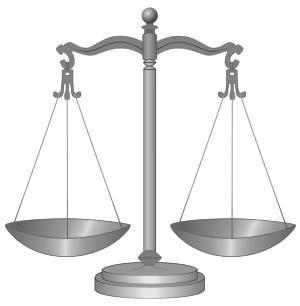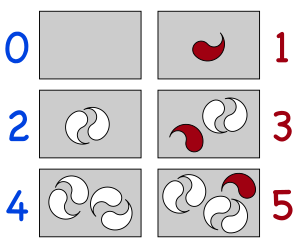Parity of zero facts for kids

Have you ever wondered if the number zero is even or odd? The answer is simple: Zero is even.
Even numbers are special numbers that can be divided by two without any remainder. For example, 2, 4, and 6 are even because you can get them by multiplying 2 by another whole number (2 = 1x2, 4 = 2x2, 6 = 3x2). Zero fits this rule perfectly because it is 0 times 2 (0 = 0x2).
Think of numbers on a number line. Even and odd numbers always take turns. If you look at the numbers around zero, you'll see that -1 (minus one) is odd and 1 (one) is odd. Since even and odd numbers always alternate, the number in between two odd numbers must be even. That's zero!
What Does "Even" Mean?
When we count things, we use numbers. Zero means there are no objects at all.
The idea of "even" or "odd" is about making pairs.
- If you can group all the objects into pairs with nothing left over, the number is even.
- If there's one object left over after making pairs, the number is odd.
Let's use this idea for zero. If you have zero objects, you can't make any pairs, but you also don't have anything left over! Because there's no leftover object, zero is considered an even number.
Imagine you have some candies:
- If you have 5 candies, you can make two pairs, but one candy is left over. So, 5 is odd.
- If you have 4 candies, you can make two pairs, with no candies left over. So, 4 is even.
- If you have 1 candy, you can't make a pair, and one candy is left over. So, 1 is odd.
- If you have 0 candies, you have no pairs and no candies left over. So, 0 is even!
Another way to think about even numbers is if you can split a group of objects into two equal smaller groups. Zero is even because you can split an empty group into two empty groups, each with zero items.
Zero on the Number Line
Numbers can be seen as points on a straight line, called a number line. When we mark even and odd numbers, a clear pattern appears, even with negative numbers:
Even and odd numbers always switch back and forth. If you start at any even number and count up or down by twos, you will always land on another even number. Since you can count from -2 to 0, and from 0 to 2, without skipping, zero fits perfectly into the pattern of even numbers.
See also
 In Spanish: Paridad del cero para niños
In Spanish: Paridad del cero para niños



